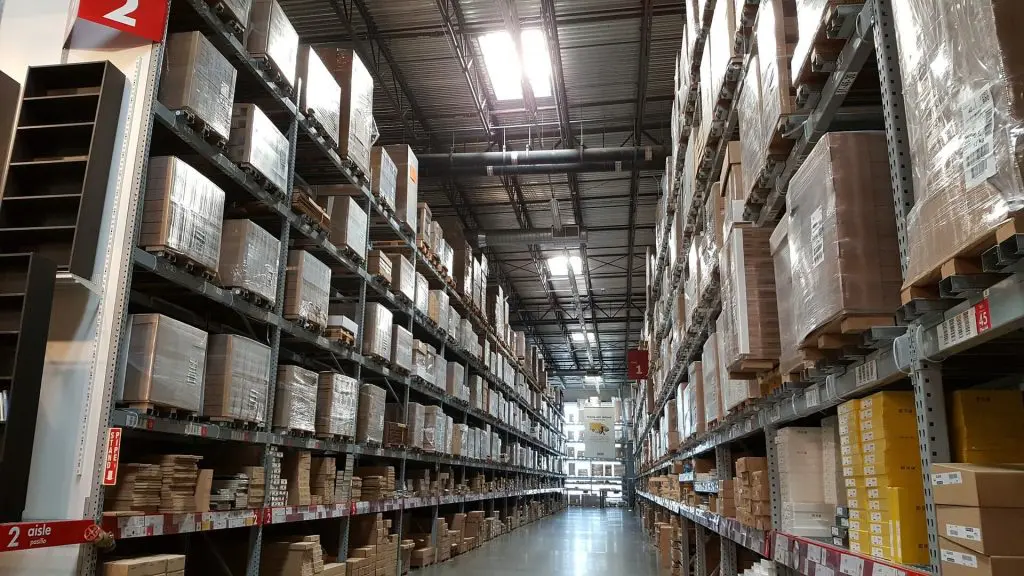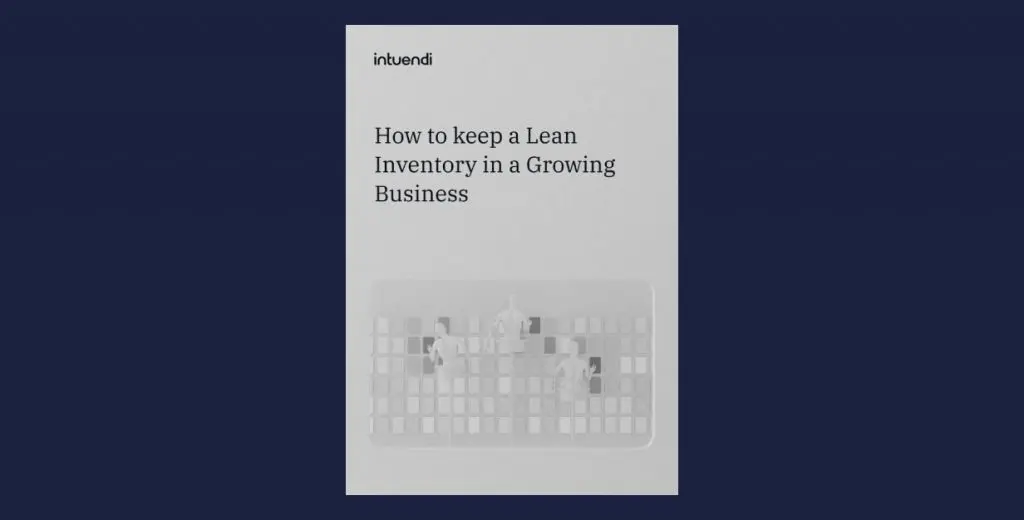Inventory, by definition, includes any asset that a business purchases or processes in order to produce and/or sell goods and services. Entrepreneurs should understand that besides the employees, inventory is one of the most important and critical assets of any business dealing in physical goods. It therefore goes without saying that effective inventory management is a crucial aspect and fundamental for a sustainable business. Inventory management is not only about the products your business sells but also everything else that goes along with those products, such as storing, transporting, handling, etc. Managing all these aspects efficiently can not only improve your cash flow but also increase profits and customer satisfaction, allowing your business to compete in an (often overcrowded) industry with a significant advantage. Inefficient inventory management has the opposite effect, leaving you with obsolete stock, waste, and lost sales. However, keeping inventory costs down is not always an easy-to-reach goal. Worry not, as in this article, we will explain inventory reduction, and why it is beneficial to minimize the amount of inventory your business holds at any given time. We will also cover the top 12 advanced strategies that you can employ to help you reduce your inventory successfully while minimizing the challenges that you may face during the process. We will also cover how best to overcome the drawbacks that can arise.
Understanding Inventory Reduction
Before we delve deeper into inventory reduction, it is important to understand exactly what it is. Inventory reduction can be defined as the process of minimizing the amount of inventory your business keeps on hand at any given time. This is achieved by either decreasing the quantity or the value of your inventory. By reducing inventory your business can reap several benefits. You can lower your inventory holding costs incurred with storage, security, insurance, etc. You can free up the working capital that would have been tied up in inventory, and rather invest it in innovating new products, expansion, or marketing. Holding less inventory also means you reduce the risk of theft, loss, and damage, which all affect your profit. Inventory turnover is represented by the ratio of sales to average inventory, so having less inventory will increase your inventory turnover. Lower inventory levels also mean better inventory accuracy between inventory records and physical inventory. This reduces the chances of stockouts, overstocking, and errors, which could reduce customer satisfaction and loyalty. Lower inventory levels enhance the visibility of your inventory, making it easier to monitor and track throughout your supply chain. Increased visibility also aids decision-making and response times, should there be any fluctuation in demand or supply. If the above sounds like changes you would like to experience in your business, please keep reading!
The Benefits of Reducing Inventory Costs
There are many benefits of reducing inventory costs that will contribute to the overall improvement and performance of your business. The first benefit is increased profitability, due to the freeing up of working capital. The reduced inventory holding costs increase your profit margin and return on investments. The second benefit is improved cash flow. The freeing up of cash that would be tied up in inventory, is now available to be invested in new opportunities or to meet financial obligations. Thirdly, you will experience enhanced customer service and satisfaction, due to increased inventory accuracy, turnover, and visibility. Satisfied customers will increase sales, loyalty, and word-of-mouth referrals. The fourth benefit is a reduced environmental impact. Every business should strive to improve its carbon footprint and meet sustainability goals. By reducing inventory costs, you reduce the amount of transportation used as well as the amount of inventory that needs to be disposed of.
Advanced Strategies for Reducing Inventory Costs
There are many ways for your business to reduce its inventory costs, but some are more efficient than others, and some require more advanced techniques and technologies than others. Let’s discuss 12 of the most effective ways.
1. Optimizing Demand Forecasting
Demand forecasting is, indeed, an essential part of inventory management. The process includes estimating what the demand for a service or product will be in the future, taking into account market trends, historical data, customer behavior, etc. You need to sell products when your customers are ready to buy. Of course, it makes sense to store only the items that they will buy and in sufficient amounts. Money is saved by not ordering inventory that you will not sell and stocking enough of the profitable products to meet customer demands. Without demand forecasting, a business would not be able to estimate how much inventory they need to order, or when to order it. Planning your inventory budget according to the insights derived from a demand forecasting report is the best practice for fighting against lost sales and excess inventory.
Accurate demand forecasting may be affected by various factors such as promotions, events, seasonality, etc. A demand forecast also needs to make allowances for unexpected disruptions in the supply chain, which can be difficult to predict, and it is also important that you pay attention to the volatility of the market and your inventory. Be aware of your suppliers’ lead time, it can change during the year. If you want to prevent lost sales during the seasonality peaks (holidays, summer, Christmas), you need to plan in advance; be sure that you’ll have enough stock to satisfy future demand, anticipate your orders if necessary, and beat the competition, ensuring that customers come knocking on your store door.
It is extremely important to only use accurate and reliable data to optimize demand forecasting. Appropriate statistical methods must also be applied, as well as incorporating feedback and adjustments. Optimizing demand forecasting can reduce inventory costs in several ways. It helps you avoid overstocking, thereby reducing inventory carrying costs, waste, and obsolescence. It also helps you avoid the pitfalls of understocking, such as lost sales and customer dissatisfaction. It makes it possible to balance your inventory levels optimally resulting in optimal inventory turnover, accuracy, and visibility.
2. Calibrating Safety Stock
Safety stock, also known as buffer stock, is the inventory you keep to help cope in times of unexpected demand or supply fluctuations. This helps safeguard your business against the negative consequences of stockouts, which would result in lost sales and customers. Safety stock unfortunately does have some drawbacks, such as storage costs, taxes, depreciation, etc. To keep these costs to a minimum, while still having the optimal amount of safety stock, there are some important factors to include in your formula when calibrating safety stock. The formula must take the average demand for the product into account, as well as the lead time between placing and receiving orders. It is also important to include the degree of variation in demand and supply variability. Another important factor to include is the desired level of service your business is aiming for, in order for you to meet the demand without a stockout. Calibrating safety stock can reduce the inventory costs of your business by minimizing the amount of buffer stock you keep, thereby reducing holding costs and freeing up working capital. It can also reduce costs by maximizing the availability of products, which would increase customer loyalty and satisfaction.
3. Inventory Segmentation: ABC Analysis
Inventory segmentation is extremely helpful as it identifies which inventory to prioritize, enabling you to manage your inventory more efficiently. This is done by dividing your inventory into various categories based on criteria such as value, profitability, frequency, and volume. The ABC method is the most common method used in inventory segmentation. It classifies inventory into three categories based on its value. A items are the most valuable items, thus making up a large percent of the total inventory value but accounting for a small percent of the inventory. With these items being the most valuable, they have a higher impact on the profitability and cash flow of a business. For this reason, they should be prioritized, receiving more attention and control. B items value is moderate, and should therefore account for a medium percentage of the inventory, and of the total inventory value. B items have a moderate impact on profitability and cash flow, therefore requiring a moderate level of attention and control. C items are the least valuable items, making up a large percentage of the inventory, and a small percentage of the inventory value. C items need the least attention and control and have a low impact on profitability and cash flow.
The ABC analysis can help your business reduce inventory costs in several ways. Allocating most of your efforts and resources to your A items will help you increase the accuracy, turnover, and visibility of these items. With less resources and effort focused on C items, it can free up working capital and reduce inventory holding costs. It can balance inventory costs and levels for B items by optimizing the resources and efforts for those items.
Read more on how Intuendi AI helped one company control their inventory levels through accurate ABC analysis in this case study.
4. Digitization and Data Analysis for Superior Inventory Management
Efficiently tracking inventory and its costs is mandatory for any business, and the only way to understand the stock value and estimate inventory costs is to keep count of everything in stock and monitor events in real time, yet many businesses still use spreadsheets and paper to manage their products. Not investing in technology is a point of failure for them. Digitization is the name given to the process of taking analog information and converting it into digital format, which can be processed, stored, and transmitted by electronic devices. Data analysis is the process of examining, transforming, and modeling data in order to extract insights and useful information.
Digitization and data analysis can be extremely useful in improving inventory management. It enhances the quality of your data, making demand forecasting more accurate, while also increasing the accuracy and reliability of your inventory records. It also enables you to access real-time data, which improves inventory visibility and decision-making. It improves inventory management by facilitating data integration throughout your supply chain, which enhances communication with supply chain partners and the different departments within your business. This helps streamline the inventory process. It also supports data-driven optimization, as it can identify and eliminate any inefficiencies in your inventory system.
But how do digitizing and analyzing data reduce inventory costs? It reduces errors in your inventory records, which could affect the accuracy of your inventory as well as your customer service. It makes your inventory system more responsive, which enables you to respond and adapt quickly to any unexpected changes in demand and supply. It also enhances your inventory system’s performance and productivity. This can increase inventory turnover and profitability.
5. Eliminating Obsolete Inventory
Inventory can become unsellable due to expiration dates, changes in customer preferences, etc. This unsellable inventory is called obsolete inventory, and it can impact your business negatively. It not only takes up space and resources but also ties up your working capital and increases inventory holding costs. The inventory reduces your turnover and profitability, as it is regarded as unsold and unprofitable products. It creates inconsistency in your inventory records and demand forecasting because it affects inventory visibility and accuracy.
Now that you know why you shouldn’t keep obsolete inventory, how do you eliminate it? The first step is to identify and quantify your obsolete inventory, through regular inventory audits. Writing off inventory is a great way to get it off your accounting books and eliminate tax liabilities. Obsolete inventory can be donated or sold at a discounted price to recover some of the costs and clear out space. Accurate demand forecasting can prevent over-ordering so that inventory does not accumulate and become obsolete. Eliminating obsolete inventory can reduce inventory costs by freeing up finances and resources, and using them for more profitable purposes. It also helps improve the quality and efficiency of your inventory, which means more customer satisfaction and loyalty.

6. Adopting Lean and Just-In-Time Principles
When it comes to inventory costs, we have to consider many components: storing inventory takes up space, having products sit in a warehouse has a cost, and if you have perishable goods, you need additional requirements to store your products and they all have a cost. Lean and just-in-time principles can be incorporated in this regard. Lean can be described as a management philosophy, with its main aim being to eliminate waste while maximizing value within your business processes. Just-in-time (JIT) is a production method that aims to deliver the right products at the right time and in the right quantity, by minimizing inventory and synchronizing the supply and demand.
These are some of the many ways in which lean and JIT principles can help you reduce inventory costs. It can significantly reduce your inventory levels, which lowers your inventory holding costs, freeing up working capital that could benefit your business elsewhere. It can also increase inventory turnover, thus improving the cash flow and profitability of your business. Another way it can reduce your inventory costs is by enhancing the quality of your inventory, reducing defects and errors. Lean and JIT principles can also improve the flexibility of your inventory, resulting in your business being able to respond quickly to the needs and preferences of your customers.
There are unfortunately some challenges you might face when implementing lean and JIT principles. It increases the dependency on your suppliers, which could expose your business to shortages, supply disruptions, or delays. You will need to be sure to partner with suppliers whom you trust implicitly. The coordination and collaboration between your different departments and partners will need to be excellent. This level of coordination could require a more expensive and complex inventory system. The accuracy and reliability of your data and processes will need to be of the highest standard, which could require you to invest more in training and technology. For these reasons we would advise you to adopt lean and JIT principles carefully and gradually. Start by first assessing the readiness, capabilities, and goals of your business, and by applying appropriate tools such as value stream mapping, pull systems, kanban, etc.
7. Automating Inventory Processes
Setting up reorder alerts is essential in order to avoid running out of your popular items. This is where automation becomes a powerful tool. Automation is the use of technology to perform tasks that would normally be done by humans, such as data entry, communication, decision-making, and calculations. Automation is an excellent way to improve your inventory management, as it vastly increases the speed and efficiency of the inventory process, which in turn reduces lead times and inventory holding costs. Automation reduces human errors in the inventory process, making your inventory more accurate and improving customer service. It also enhances the consistency and standardization of the inventory process, which can increase inventory quality and compliance. Another way it can improve inventory management is by making your inventory system more adaptable and scalable, thus supporting the growth of your business.
We have listed some examples of automation in inventory management for you. You could use barcode scanners, loT devices, or RFID tags to capture and transmit your inventory data. This can help eliminate the need for manual data entry, as well as increase the quality and visibility of your data. Another option is using software applications, such as inventory management software (IMS), enterprise resource planning (ERP), or warehouse management systems (WMS). These are all capable of analyzing and processing your inventory data and can automate your inventory planning, ordering, tracking, and reporting. Artificial intelligence (AI), robotic process automation (RPA), and machine learning (ML) are all incredible at optimizing and enhancing the inventory process. They are capable of automating your demand forecasting, inventory optimization, inventory segmentation, and inventory replenishment.
An automated inventory process is able to reduce your inventory costs as it saves time and labor. This can increase productivity and lower the operational costs of your business. It also improves the performance and profitability of the inventory system, thereby enhancing the sustainability and competitiveness of your business.
8. Strategic Supplier Management
Supplier management is the process of managing your relationships and interactions with your suppliers. It is a vital component of inventory management, as it affects the availability, quality, and cost of your inventory.
Strategic supplier management differs slightly, in that it is the practice of developing and maintaining long-term, collaborative, and mutually beneficial partnerships with your key suppliers, who can offer the very best service and value to your business. Strategic supplier management can help your business reduce inventory costs by reducing lead times, which can significantly lower inventory holding costs and increase your inventory turnover. It also improves your inventory flexibility. This enables you to easily adjust your inventory levels according to the demand and supply fluctuations. It can improve your inventory quality by reducing errors, defects, and rework in the production process. Another huge benefit of strategic supplier management is that it can increase your inventory innovation, enabling your business to access new technologies, products, or markets.
Let’s look at some of the methods used in strategic supplier management. Possibly the most important one would be to select the right suppliers. These need to be suppliers who can meet all your business requirements, goals, and expectations, and whose business values align with yours. You can negotiate the best terms and conditions with your suppliers as far as price, delivery, payment, and quality are concerned. Another method is to communicate and collaborate with your suppliers, which involves sharing information, ideas, and feedback, and resolving issues and conflicts. You can also use the evaluation and reward method, where you monitor and measure their performance. This incentivizes your suppliers to work towards receiving that recognition and the rewards. By managing suppliers strategically, your business can reduce inventory costs, saving you money and resources, which can then be used for more productive and profitable purposes. It can also improve the satisfaction and loyalty of your customers, which can increase referrals and sales.
9. Using Dropshipping to Reduce Costs
Dropshipping is a business model where the business does not keep any inventory at all, but instead transfers the customer orders and shipment details to a third-party supplier. The supplier then ships the product directly to the customer. Dropshipping can be an incredible way to reduce inventory costs. It eliminates your inventory holding costs because you no longer need to store, transport, or handle any inventory. With no inventory in stock, you will no longer have any of the risks that come with holding inventory, such as damage, theft, or obsolescence. You could also increase your inventory variety, as your business can offer a wide range of products without having to stock them.
Unfortunately, there are some drawbacks and challenges that come with drop shipping. When your business relies completely on the supplier to fulfill the customers’ orders, you lose control over the inventory quality and delivery. You can also face high competition and low margins, as the dropshipping market is rather saturated and the prices are often driven down by the customers and the suppliers. Having no contact or interaction with your customers can limit your branding and customer loyalty. For these reasons you should use dropshipping carefully and selectively, ensuring that you choose the right products, and most importantly, the right suppliers. This is what will differentiate you from your competitors.
10. Optimizing Order Management and Reorder Points
Order management is the process of managing customer orders, from the moment they are placed until they are delivered. Reorder points are the inventory levels that trigger the replenishment of the inventory, to avoid stockouts and overstocks. Optimizing order management and reorder points can be extremely helpful to your business. They can reduce the order cycle time, which is the time between receiving and fulfilling an order. This can reduce your inventory holding costs while increasing customer satisfaction and loyalty. They can also reduce the quantity of inventory that you need to order at a time. Reducing your order size makes it possible to lower your inventory holding costs and free up working capital. It can reduce your order frequency, which is the number of times that inventory is ordered in a period, which can lower your ordering costs and inventory holding costs. Optimizing order management and reorder points can also increase your order fill rate, which is the percentage of customer orders that are fulfilled without a stockout, which can increase your customer satisfaction and loyalty.
There are several methods that can be used to optimize order management and reorder points. You could use the economic order quantity (EOQ) formula. This formula considers the demand, ordering costs, and holding costs, and then calculates the optimal order size that will minimize the total inventory costs. Another method is the reorder point (ROP) formula. This formula considers the average demand, the lead time, and the safety stock when calculating the optimal inventory level that triggers the replenishment of the inventory. You could also use the periodic review system (PRS), which replenishes the inventory at fixed intervals, by considering the target inventory level and the current inventory level. Another excellent system is the continuous review system (CRS). This system replenishes the inventory whenever it reaches the reorder point, by considering both the demand and supply variability.
The optimization of order management and reorder points can reduce your inventory costs by saving you time and money, which could then be used for more productive and profitable purposes. It can also improve the inventory performance and profitability, which can significantly enhance the competitiveness and sustainability of your business.
Read about streamlining ordering processes in our our case study below:
11. Innovations in Inventory Management Software
Inventory management software is a software application that helps a business plan, organize, control, and optimize its inventory. Inventory management software can help your business reduce its inventory costs in several ways. It can automate your inventory process, such as data entry, communication, calculation, and decision-making, which can increase the speed, accuracy, and efficiency of your inventory system. It can also integrate your inventory data, such as inventory levels, locations, movements, and costs. This will improve the inventory visibility and collaboration across the supply chain. It can analyze all inventory data, including demand patterns, inventory performance, and inventory optimization, which can provide useful insights and information. It optimizes the inventory system, such as demand forecasting, inventory reduction, etc, which can enhance the inventory quality and efficiency.
There are several incredible innovations in inventory management software. There is cloud-based inventory management software. This enables you to access and manage your inventory data from anywhere, at any time, using any device that has an internet connection. There is also mobile inventory management software. This software allows you to use your mobile devices to scan, track, and manage your inventory data, using features such as barcode scanners, RFID readers, or GPS trackers. Another great option is AI-powered inventory management software, which uses artificial intelligence, machine learning, or deep learning to automate and optimize inventory processes, such as demand forecasting, inventory replenishment, etc. It makes use of techniques such as neural networks, natural language processing, or computer vision.
A few of the ways that inventory management can help reduce your inventory costs are by leveraging the latest technology and trends. This can increase the competitiveness and sustainability of your business. It can also enhance the overall customer experience and satisfaction, which could increase sales and word-of-mouth referrals.
Find out how Intuendi AI can help you manage your inventory:
12. Improving Warehouse Management
Warehouse management is the process of managing the physical storage, handling, and movement of the inventory within a warehouse or a distribution center. Warehouse management is a crucial part of inventory management, as it directly affects the availability, cost, and quality of inventory. By improving your warehouse management, you can reduce inventory costs in a number of ways. You can free up space in your warehouse by getting rid of unnecessary merchandise: once you identify your unsellable/unsold/obsolete products, offer customers a promotional sale on them. Then, you’ll be ready for your new purchase orders: Reducing the amount of warehouse space you need, can lower the warehouse rent, utilities, and maintenance costs. It can reduce warehouse labor, which can lower the amount you have to spend on warehouse wages, benefits, and training costs. It can reduce the amount of warehouse waste, which can help lower warehouse disposal, recycling, and environmental costs. It can also increase the overall efficiency of the warehouse, which can improve the productivity, performance, and profitability of the warehouse.
There are various methods you can use to improve warehouse management. The first method is the use of warehouse layout optimization. This involves designing and arranging the warehouse space, equipment, and inventory in the most efficient and effective way, by considering factors such as product characteristics, demand patterns, and warehouse operations. The second method is the use of warehouse inventory optimization. This is achieved by organizing and allocating the inventory within the warehouse in the most efficient and effective way, by considering factors such as product value, frequency, and profitability. The third method is by using warehouse automation. This method makes use of technology to perform tasks usually done by humans, such as packing, sorting, loading, etc, which can increase the speed and accuracy of warehouse operations. The fourth method is by using warehouse management software. This is a software application that helps a business plan, organize, control, and optimize its warehouse operations, by providing features such as inventory tracking, order fulfillment, and warehouse reporting.
Warehouse management makes it possible for you to reduce inventory costs by saving time and money, freeing up capital for more productive purposes. It also reduces inventory costs by improving inventory quality and availability, increasing customer loyalty and satisfaction.
The Challenges in Reducing Inventory
As we have discovered, reducing inventory can bring many benefits to your business, but along with those benefits come some challenges and disadvantages. Let’s discuss some of those challenges. Reducing inventory increases the complexity and uncertainty of the inventory system. This can require more coordination, collaboration, and communication among different departments and partners, as well as more investment in technology and training. It also increases the risk and vulnerability of the inventory system, which can expose your business to supply disruptions, delays, or shortages, and to demand fluctuations or changes. Reducing inventory can also reduce the responsiveness and flexibility of the inventory system. This could limit the ability of your business to adapt to customer needs and preferences and to any market opportunities. Reducing inventory could possibly result in losing sales, customers, or market share, should there be any inventory issues or errors. This could unfortunately reduce the profitability and competitiveness of your business.
Given the above risks, it is important that your business reduce inventory carefully and strategically. You should be sure to thoroughly assess your current inventory situation, performance, and goals, and identify its strengths, weaknesses, opportunities, and strengths. Make sure you choose the most suitable and effective inventory reduction strategies, methods, and tools, and implement them gradually and systematically. You should also closely monitor and evaluate the results and impacts of the inventory reduction, and make adjustments and improvements where needed. It is important to balance the inventory costs and benefits and find the optimal inventory level that meets your business objectives and customer expectations.






